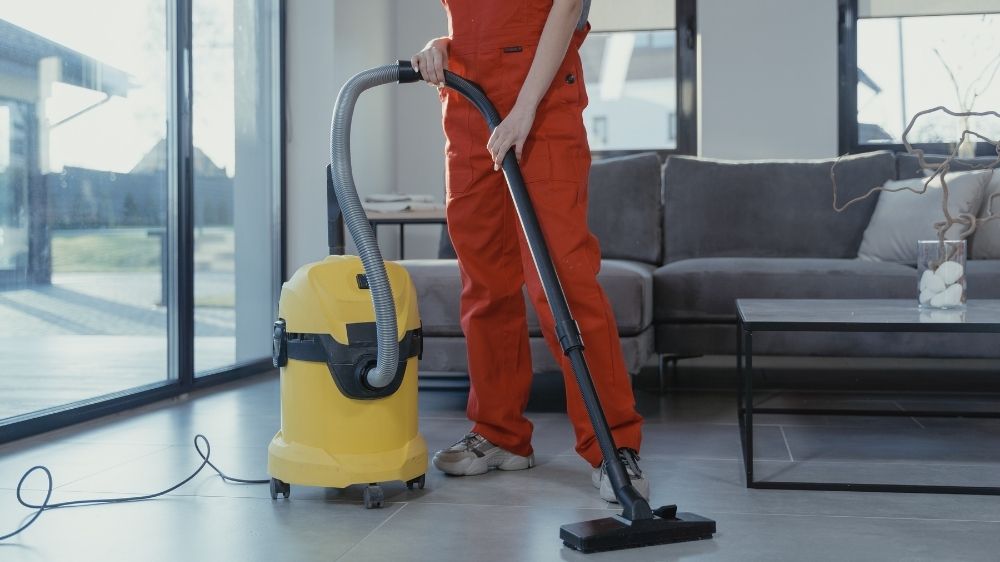
What happens if you don't get your gutters cleared?
Be it leaves, moss, bird nests, or ice, obstructions in gutters have costly and sometimes even dangerous outcomes.


Gutters aren't often high on the priority list for people organising a building's cleaning schedule, being so out of sight. The problem is, if the gutter system gets blocked, it can lead to some pretty significant damage. Be it leaves, moss, bird nests, or ice, obstructions in gutters have costly and sometimes even dangerous outcomes. Fortunately, a top-notch gutter cleaning and clearing service can solve the majority of these problems.
In this post, we'll talk about what causes clogged gutters and downpipes, and how a professional cleaning services team like ours can help.
The consequences of blocked gutters
Let's go through what something as simple as a blocked gutter can cause in your commercial or industrial building.
Structural damage
If your gutters get blocked with debris, the water they hold will have nowhere to go, causing overflow. This leaking water is capable of causing a huge amount of varied damage, especially to the very structure of your building, both the inside and outside. These leaks can lead to several serious issues:
Wall and facade damage
Drywall, sliding, plaster, wood, brick, concrete, steel, and many more wall materials can suffer the consequences of a leaking gutter. The water damage these materials suffer will differ from material to material, but all will result in structural issues and costly repairs and replacements if left unchecked. Wood will rot and warp, porous bricks will get damp, gypsum plaster may disintegrate, and drywall will swell and sag.
All of these consequences can lead to the failure of your walls, which would cause significant problems and expenses. If your office building or industrial unit walls lose their integrity, you'll not only need to pay for repairs, but also the monetary consequences of operational disruption.
Foundation damage
The building's foundations are not an area you want to suffer from water damage. These are what hold your property up, typically from their underground position, anchoring the structure in place. If water flows down through the walls and into the foundations, if the gutter overflow soaks the ground around your foundations, or if the gutter system spills water in the wrong place at ground level, they may start to suffer.
Water around and permeating foundations can cause the building to become unstable through soil erosion and settlement issues. This can then lead to walls cracking and splitting, floors becoming uneven, and the structure perhaps even starting to separate in very extreme cases. To avoid anything even close to this, ensure your gutters are regularly cleared to prevent blockage and overflow.
Fascia and soffit damage
Fascias and soffits are very common in the UK, designed to finish off the roofline aesthetically, protect the internal roof structure from the elements and pests, and support gutters. Fascias and soffits are typically made of PVC, though some are wood; however, both can be damaged by gutter overflow. Wood can rot through and crumble, while PVC can stain, go mouldy, and even weaken if water is consistently leaking behind the material.
Gutter damage
Debris isn't as lightweight as water, and gutters aren't designed to hold masses of material. Leaves, twigs, dirt, nests, and even small pieces of litter that have been caught in the wind can land and gather in gutters, blocking and then adding weight. This can cause gutters to sag or bend, upping the risk of breakage and failure. Gutters aren't one of the most costly building repairs, but fixing them is certainly an unexpected expense that can be easily avoided with proper gutter maintenance.
If the building's gutters are made of a ferrous metal, like iron or steel, you have a new potential problem that can come from blocked gutters: rust. The settling of damp debris and constant sitting water may eventually lead to rust, which can lead to breakage. If your gutters are made from corrosive metals, such as iron or aluminium, then they will be susceptible to corrosion, which is the gradual destruction of a material. This can also lead to eventual breakage. Keep on top of gutter maintenance to avoid damaging the guttering structure directly.
Moss, fungi, and mould
As soon as persistent moisture is introduced to a material that isn't supposed to be constantly wet, you'll likely end up with moss, fungi, or mould. Moss and other common algae found on buildings love moist, cool, shaded spots, making external gutters the perfect home. Moss doesn't have a root system, just very thin filaments that act as an anchor, so they don't require soil to get cosy and grow. Moss buildup in your gutters will lead to blockage, leading to all sorts of other damage.
Fungi and mould need moisture and an organic food source (which includes materials like paper, wood, leaves, and even dust) to thrive. A blocked gutter provides these living conditions in spades. Worse still is that the fungi and mould spread fast, so if your gutter is creating internal and external leaks, the spores will follow. Soon, you may find mould covering your office walls and fungi growing on your wooden window frames.
Pests
Some pests love the environment a blocked gutter provides. Cockroaches and other insects find blocked gutters the perfect breeding ground, where larger pests such as rodents and squirrels find the blockage a great place to build their nests. To avoid these unwanted guests, hire a professional external cleaning service to keep your gutters free of pest-inviting obstructions.
Ice dams
If you live in a location where ice occurs during colder seasons, then you need to be aware of ice dams. First: What is an ice dam? An ice dam is a blockage of ice buildup in your gutter. A good way to spot ice dams is the formation of icicles, which are caused by water overflowing and freezing as it drips. Without the blockage, this water wouldn't flow over the side.
Ice dams occur when the air in the top of the building, such as an attic, is warmer than the air outside. This causes snow on the roof to melt, run down into the gutters, then freeze, as the gutters will be much closer to the outside temperature. If the top floor of your building has poor insulation or your gutters are already fairly blocked, ice dams have a high chance of forming in freezing temperatures.
Unappealing aesthetics
Damage aside, blocked gutters look ugly! Not only are they visibly unsightly, but the issues they cause structurally are unattractive, too. Seeing a gutter with twigs and moss growing over the edges doesn't give the impression of a well-kept building, which can be harmful to a business's reputation. The same applies to stains and mould on building facades; customers, clients, visitors, passersby, and even employees may be put off by the grimy look of the building. A clean, well-maintained property can support a positive impression of your business and operations to the world.
Arrange a professional gutter cleaning service
Whether you're concerned about your current gutter situation or you want to organise a one-off or contracted gutter clearing service, we're here to help. Our experienced, knowledgeable team have the experience and specialist equipment needed to both clean and clear your commercial or industrial property's gutters, keeping you safe from the consequences of blockages.
If you'd like to arrange a cleaning contract with us, we'd usually recommend two gutter clears a year - once in spring, to clean up any debris from winter, and once in autumn, when the leaves are falling and ready to block your gutters up. Using the latest gutter vacuum technology, we'll efficiently remove any blockages and any materials that could cause future obstructions, leaving you with peace of mind.
Interested? Don't hesitate to get in touch for a friendly chat about your cleaning needs.



